What is left to save in Orange?
Last updated 9/23/2011 at Noon
First there was a fire that claimed nearly an entire
city block, then, there was progress. Buildings in the downtown area that once
made up the business district of Orange are gone. Some of those buildings were
built before the turn of the 20th Century. The businesses that once
lined Fifth Street from Green Avenue to Front Street and the businesses that
thrived along Front Street are all gone. The Orange National Bank has been replaced
by another, newer building. First National Bank moved from downtown to another
location. The FNB building became the office for the Stark Foundation. Both banks have been sold and resold many
times. The current names are Capital One and Wells Fargo.
Capital One Bank, Farmers Mercantile and The Orange
Stationer, along with the Barking Dog Café are about the only retail businesses
left in downtown Orange. Much has been made of the replacement of historic
buildings with parking lots. That is what happens when things progress.
The world class Lutcher Theater had to have parking
for the patrons. The Stark Art Museum had to have parking for its patrons.
Lamar State College needed parking for the influx of students it had since the
offered programs has expanded, bringing more students to its downtown campus.
What is left in Orange worth saving?
The two top candidates are the old, long closed
Southern Pacific Depot building and the 2.56 acre church plant of First Baptist
Church, notably the main sanctuary. Both buildings are the subject of many
highly charged, emotional, sentimental debates. Overlooked in the building
saving movement is the campus of Emma H. Wallace High School.
Wallace High School is the most damaged, neglected,
ignored building of the three and has a historic value second to none. It was
the center of Black education in Orange for decades and was named for the lady
who was the driving force in Black education in Orange. It is however, not
located in a highly visible area and does not seem to have any support from the
mainstream building-savers.
Standing on John Street and looking through the
front windows, sky is visible. In all probability most of the roof is gone and
the resultant damage to the floors could be bad enough that they may not be
able to be saved. The majority of windows are gone in the original building and
the newer building to its right.
If public support and funding were available, this
building would be a candidate for a very nice community center.
The main building of the First Baptist Church plant
is the Greek revival sanctuary building, complete with historical marker in
front.
This building has been the subject of burning debate.
According to rumors there was a group that wanted to save the building and stay
in the downtown location. Another group wants to sell the property and move to
the Church’s property north of Orange.
That dispute leaves the survival of the very historical building in
doubt.
The current owners of the building, the congregation
of First Baptist Church of Orange have the right to do as they wish with their
property. They may or not be bound by whatever regulations go along with a
historical marker. The church members not wanting the building are trying to
sell the building. The new owner would then be able to do whatever they would
wish to do with their building. What could be done with it?
The new owner could keep it as a church, but it
would have to be a church with a large enough membership to afford the expenses
related to the entire church plant. If a civic group banded together and
purchased the building for something such as a performing arts center, or
community center, or local history museum, could they be assured of enough
participation to keep the building in operation?
Downtown Orange is not a top tourist designation. A
sign on the interstate that said “Local History Museum of Orange” would
doubtfully draw many speeding past Orange at 70 miles per hour. The established
Stark Art Museum as fantastic and world class as it is draws visitors, but not
large numbers at a time. Shangri-La has not seen the projected influx of
tourists that they hoped for.
A performing arts center would only appeal to people
with a strong interest in performing arts, not to the general public in enough
numbers to generate meaningful income. How would non-church use provide enough
income to keep up the property?
The old depot is a cute little building that in its
time saw people off to wars and vacations. It is probably the worst candidate
for meaningful use. It is located on a narrow strip of land next to a still in
service railroad track. The building is on a lot elevated six or more feet
above street level. There is very
limited parking available on the same level as the building. For a number of
years the building has been closed, boarded up, broken into, lived in by
vagrants, boarded up again. There have been a couple of fires. There has been
hurricane damage. The roof is in bad repair and the state of the plumbing and
electrical systems are questionable. For
any public use it would have to be made handicap accessible, no small cost.
There have been attempts to buy the building over
the years. Price has been an issue at times and the last attempt by a
prospective buyer with a seemingly workable proposal was shot out to the water
by the school superintendent.
Probably the best use for the depot would be some
sort of niche restaurant, small, intimate, a good place for a quiet meal, and a
few drinks. Drinks? Well, have to rethink that one. That was the problem last
time.
As fine a location as the depot is for an office.
There is the issue of the working track five feet out the door. Freight trains
are long and noisy. There was an old depot freight building in Beaumont
converted to an office and it has worked well, but the tracks were moved years
before.
Orange was a sleepy little town before lumber and World
War II shipyards. It became small town America again after the influx of
wartime industry and population. Economics cost Orange the shipyard and steel
fabrication business. Shipyard work is making a comeback of sorts.
The bottom line about saving buildings is: who
cares? Do enough of the citizens of Orange and the surrounding area really care
about preserving the few historic buildings that are left in Orange? Would
funding be available to purchase any of the buildings? If you save them, what
will they be used for? Where will the income to keep them up come from? Who
will visit and use them? Most importantly, what will be the criteria for
picking and choosing what will be saved?
This issue has to go beyond emotion and be
practical. About the only things left are, a school, a church, and a
depot. Has time passed them by?



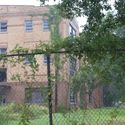
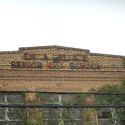
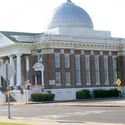



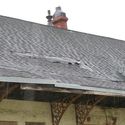
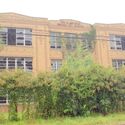














Reader Comments(0)